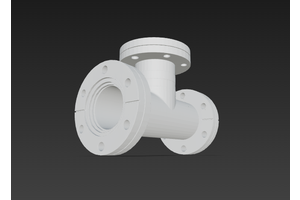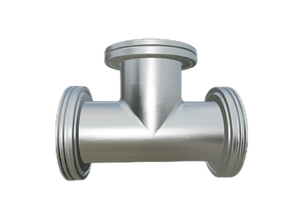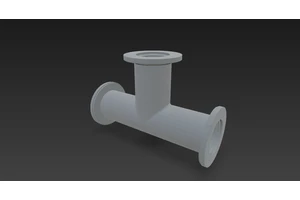Understanding the Relationship Between Pressure, Gas Load, and Pumping Speed in Vacuum Systems
In vacuum systems, the simple equation Q = P × S is used to explain almost every design challenge. Gas load (Q), pressure (P), and pumping speed (S) are the three variables whose balance determines how well a vacuum system performs.
1. How to Reach a Lower Pressure (P)?
Reaching a lower pressure is often the hardest part of vacuum work. Once you understand that pressure depends on the balance between the system’s gas load (Q) and the available pumping speed (S), the task becomes clearer.
Below are the key concepts in more detail.
2. Understanding Pressure (P)
Pressure (P) is the force per unit area exerted by gas molecules colliding with a surface.
To reduce pressure (P):
Increase pumping speed (S), and/or
Decrease gas load (Q).
3. Understanding Pumping Speed (S)
Pumping speed (S) is the volumetric rate at which a pump removes gas from the chamber.
To reduce pressure (P):
Increase pumping speed (S), and/or
Use larger-diameter and/or shorter lines between pump and chamber.
4. Understanding Gas Load (Q)
Gas load (Q) is the sum of every source of gas entering the vacuum space. Typical sources include:
Initial gas in the chamber
Process gases
Out-gassing
Diffusion
Real leaks
Virtual leaks
Back-streaming
Permeation
5. How Pumping Speed (S) Affects Pressure (P)
From Q = P × S (or P = Q / S):
To raise pumping speed (S):
Verify that the system is not conductance-limited. The line conductance (C) must be larger than the pump’s rated speed (S).
Select a larger pump to increase (S). A higher (S) reaches a lower (P) in less time.
6. How Conductance (C) Affects Pressure (P)
Conductance (C) quantifies how easily gas flows through an aperture or tube at a given pressure. Hardware with good conductance ensures that the pump’s full speed (S) reaches the chamber and that the ultimate pressure (P) is as low as possible.
Important note: When overall conductance is poor, installing a bigger pump will not improve performance (ultimate pressure or pump-down time).
Simple rules to improve conductance (C):
Match the pump inlet flange diameter to the tubing diameter.
Keep tubing as short as possible.
Use straight runs; avoid bends.
Remember: low-conductance components set the maximum effective speed (S_eff) the system can achieve.
When conductance is taken into account, the working equation becomes
Q = P × S_eff
With gas load (Q) fixed:
If conductance (C) ↑, then S_eff ↑ and P ↓.
If conductance (C) ↓, then S_eff ↓ and P ↑.
7. How to Increase Pumping Speed (S)
Make sure the hardware between pump and chamber is not the limiting factor: the line conductance (C) must be greater than the pump’s rated speed (S).
Only after confirming that the plumbing is adequate, choose a larger pump. A higher S will reach a lower P more quickly.
Again: if conductance is poor, a bigger pump will not help; calculate C to verify.
Example: when S = C, the effective speed S_eff drops to 50 % of the pump’s rating.
8. How Gas Load (Q) Affects Pressure (P)
From Q = P × S (or P = Q / S):
If gas load (Q) decreases, a lower pressure (P) is attainable.
The lower the Q, the lower the ultimate pressure the pump can reach.





